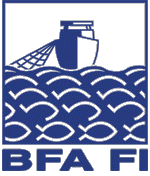1948 – 1968
The rebirth of German fisheries research after the Second World War is linked to the date April 1, 1948. On this day, in Hamburg, the Central Agency for Fisheries emerged from what remained of the former Reich Centre for Fishery in Hamburg. After the founding of the Federal Republic of Germany, responsibility for the agency was transferred to the German Agricultural Ministry and, from 1952 onwards, was known as the German Federal Research Centre for Fisheries (BFAFi).
The main responsibilities of the BFAFi were pre-determined and included fishery advice to the ministry; monitoring the fish population and technical requirements of fish production, and cooperating scientifically with the International Council for the Exploration of the Sea in Copenhagen. Due to the special needs of the marine environment – neither swarms of fish nor sea currents or the nutrients and pollutants thus transported are influenced by national borders – fisheries research has always been conducted in close international cooperation.
During the period of food shortages, a particular emphasis was placed on utilising all the available marine species. The BFAFi Institute for Sea Fisheries conducted research on the biology of commercial fish, including the location and population changes in the various fishing zones. Ongoing topics including the age composition, growth periods and distribution areas of herring in the North Sea, cod around Iceland, off the coast of Greenland and Newfoundland, haddock from the Barents Sea and ocean perch from east Greenland. The Institute for Coastal and Freshwater Fishery conducted similar work in coastal areas with a particular emphasis on mussel and shrimp fishing. The fields Aquaculture and fish diseases were added in 1965. Fish as food was a focus of the Institute for Fish Processing (from 1964: the Institute for Biochemistry and Technology); the main tasks in the early years were mainly fish preservation and product manufacturing.
In the German Democratic Republic, the Institute for High Sea Fisheries and Production Technology (IfH) was founded in Rostock in 1953. This central research agency for the fish industry in the GDR had a similar portfolio to BFAFi in West Germany. IfH's technological and economic research was shaped by the Soviet goal of industrial exploitation of high-sea fishery. This included the continued development of the pelagic network and, after 1960, fishing fleets.
1969 – 1989
In the course of the expansion of national economic and fishery zones in the 1970s, the BFAFi Institute for Sea Fisheriees studied populations in the deep waters of the Atlantic, off the coast of Mexico, Argentina and New Zealand, as well as the Antarctic krill. Whilst the West German fishing industry hardly targeted these populations, the GDR trawlers successfully fished the populations studied by the East German colleagues in all three oceans, around Africa, off the coast of North and South America and in the Antarctic.
During the same period, the main activity of the BFAFi Institute for Catching Technology (until 1964: Institute for Nets and Material Research) was, above all, the development of larger and more effective fishing nets. The institute played a major role in the international development of the so-called hunting nets.
The Department of Coastal Production was launched in the GDR in 1977 to study marine populations in the coastal waters (new international sea treaties were adopted at that time).
1989-1992 German Unification
After the accession of the GDR to the Federal Republic of Germany, the IfH, which had many parallels to the BFAFi, was dissolved. In its place, the BFAFi Institute for Baltic Sea Fisheries was founded in 1992. The staff was recruited from the Working Group for Fishery Biology at the now defunct IfH.
1992 – 2007
The pollution of the seas with undesirable substances as well as gaps in scientific knowledge of eco-system research led to the founding of the BFAFi Institute for Fisheries Ecology in 1993. Its predecessor was the Laboratory for the Radio-Ecology of Water Bodies, which was founded in 1965 to deal with the consequences of radioactive fallout from the atomic bomb tests of the 1950s and the introduction of British and French reprocessing plants in the sea. The institute also conducted studies on fish diseases and research in aquaculture.
In the light of the continuing demand for depleted supplies of local unprocessed fish, the Institute for Catching Technology (Since 1995 Institute for Fishery Technology) concentrated on developing population- and energy-saving fish catching methods. When BFAFi was wound up, the institute was closed, and the responsibilities were divided between the Thünen Institutes for Sea Fisheries and Baltic Sea Fisheries.







